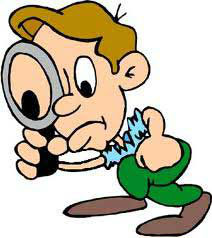The FBI has joined state and regulatory probes of high-frequency traders to see if the firms are guilty of insider trading.
Agents, who started the probe about a year ago, are looking to see if the HFTs used information to trade ahead of large institutional orders, an FBI spokesman told a number of media outlets on Monday when news of the investigation first surfaced.
In one possible scenario, agents would look to see if a high-speed trading firm profited by jumping ahead of a huge buy order, and then quickly exited after the giant order pushed the stock higher.
News of the probe surfaced Monday when Wall Street was already abuzz with the accusation by a best-selling author that HFTs had rigged the markets — picking the pockets of Main Street investors in the process.
The author, Michael Lewis, appeared on “60 Minutes” on CBS Sunday night to promote his new book “Flash Boys: A Wall Street Revolt,” in which he claims HFTs, with their high-speed computer algorithms, are sneakily siphoning away profits from retirement funds, everyday investors and day traders alike.
The FBI joins New York Attorney General Eric Schneiderman, the Securities and Exchange Commission and the Commodity Futures Trading Association in looking into HFTs.
“What’s improper is … using any special advantage or edge with your speed to have an unfair advantage over anyone else,” Schneiderman told “CBS This Morning.”
Schneiderman has likewise singled out stock exchanges that have allowed high-frequency traders to “co-locate” their computer servers at the exchanges’ own data centers, giving them a potential speed advantage over competing traders.
Indeed, the trading desks of JPMorgan, Bank of America, Citigroup and Goldman Sachs all posted gains every day of the first quarter of 2010, amounting to a combined “244 winning trading days against zero losses,” Yahoo! Finance’s Jeff Macke posted on a blog Monday.
“Draw your own conclusions,” Macke wrote.
None of the banks have been charged with breaking any HFT-related rules.
To protect against skimming by high-frequency traders, Macke suggests that investors buy stocks with so-called “limit orders,” which put a ceiling on the price a buyer will pay for a given security.
“Stocks fluctuate throughout the day, but if you enter a limit at or near the market price, you’ll mostly likely get your order filled,” Macke says.




